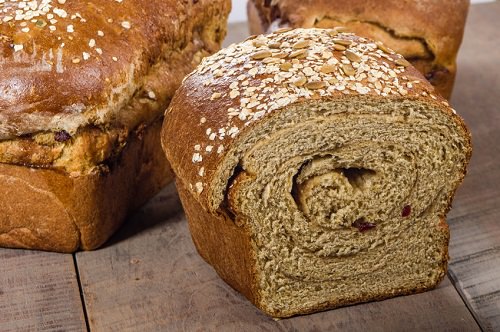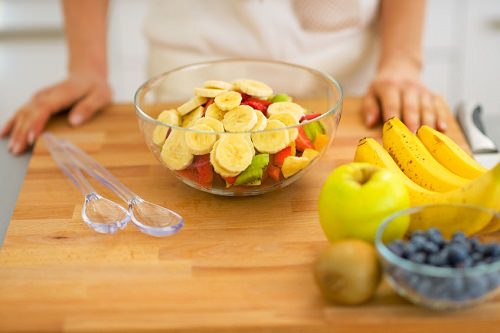After years of eating fast foods and high-calorie snacks, you’re now ready to adopt healthy eating. You might be willing to tolerate nutrient-rich vegetables on your plate, but shudder at the thought of eating spinach or broccoli daily. Maybe you want to start eating healthy to reduce your risk of diabetes or heart disease, but you need the right tools, nutritional information and recipes. I don’t promote dieting and I don’t recommend anyone to stick to a strict diet, especially if they don’t want to lose weight. But I do promote healthy eating since I think it’s the key to a healthier, happier and longer life. Here are some tips to get started with healthy eating.
1. Start with a variety of nutrient-rich foods
Your body needs dozens of essential nutrients for optimum performance, and the only way you’ll get them all is to consume a variety of foods. Your daily meals should contain foods from the main food groups to meet your daily nutritional requirements. So make sure to include whole grains, proteins, carbohydrates, vegetables, and fats in your diet. Remember, you don’t have to starve yourself. Healthy eating isn’t about eliminating lots of foods from your daily diet, it’s about eating healthier meals each day.
2. Swap white bread for whole grain breads
I was a huge lover of white bread and it was really hard for me to swap it for a whole grain bread. I felt a great difference. The thing is, refined carbohydrates, such as white bread and pasta are bad for your heart and arteries. But there’s another reason to choose whole grains over processed foods: you’ll lose weight. Whole wheat breads, bulgur, and brown rice have more fiber, zinc, and vitamins that their processed counterparts. However, make sure to check the ingredients as some foods with “multi-grain” labels are deceptive. But the better option is to make your own bread. Well, I know it might not be easy at first, but once you try, you will stop buying whole grain breads once and for all.
3. Choose healthy fats
It’s not about quantity but the quality of fat you eat. Researchers banished misinformation surrounding fats and proved that fats from nuts, fish, and vegetables promote good health. Start and finish your cooking with healthy oils like olive, walnut, sesame, hazelnut, and almond oils. Include grains, nuts, fish, and flaxseeds in your favorite recipes. Many dieters make a huge mistake when they eliminate healthy fats from their daily diet. Fats are an essential part of a healthy diet, but only if you consume them in moderation. Healthy fats help manage your mood, control fatigue, and keep your heart healthy.
Read also – 7 Fun Ways to Add New Fruits and Veggies to Your Diet
4. Eat moderate portions
Staying healthy and losing weight could be as simple as reducing your portion sizes. According to research, most individuals eat four to five portions at every meal. Even fast food restaurants have increased portions to satisfy demands. Consult nutritional guides to determine the recommended serving sizes and make sure to measure everything. You can use smaller plates or larger forks to control your portions and eat less. You don’t need to eat more food than you need no matter how healthy it is.
5. Don’t skip meals
Skipping meals, especially breakfast, can lead to out-of-control binging later on. Skipping meals can also lead to a slowed metabolism and weight gain. Make time for a healthy breakfast to start your day right. I make an egg white omelet with vegetables and drink a green smoothie for breakfast. It helps me feel nourished and energized throughout the day.
Even if you are trying to drop weight, never skip meals. While you can cut calories out of your day, it can cause cravings and overeating. Plan your meals so you won’t be tempted to grab whatever’s in sight when intense hunger strikes.
6. Beware of elimination diets
For most people, taste trumps nutrition. If you’re drawn to high-fat and sugary foods, eliminating them from your diet might seem sensible. However, most people fall out with these types of diets when restricted foods become irresistible. Instead of eliminating these foods altogether, use them in moderation or eat them less often. As you incorporate other healthy foods in your diets, you’ll have an easier time letting the bad foods go.
7. Cook your own food
The only way to control what you’re eating is to cook your own food. Busy moms and dads have no time to slave in the kitchen but modern conveniences and simple recipes make it easy to put dinner on the table in less than 30 minutes. When you cook your own food, you know what you add to your meals. No matter how busy you are, find time to make your own food.
8. Identify your diet pitfalls
One of the simplest ways to stay on track with healthy eating is to be honest with yourself. Identify and acknowledge your poor eating habits and record the benefits of choosing healthy options. Set goals and start recording everything you eat. A visible record will help you make better choices and keep you accountable. If you’re eating larger portions, make a decision to cut back and swap out your high-calorie favorites for low-calorie alternatives.
9. Make changes gradually
Big changes don’t happen overnight and you can learn to eat healthier in a week. It takes time to change poor habits into good ones. Trying to do it all will impede your progress. Cut back on your excesses and make gradual changes as a start to your long-term healthy eating plan. Start integrating small changes into your eating habits today, and enjoy a better health tomorrow. Don’t forget about your workout routine. You won’t boost your health, if you don’t exercise regularly.
Read also – 10 Tried and True Tips for Cleaning Up Your Diet
10. Factor in your lifestyle
While there are general suggestions for healthy eating, it all comes down to your individual lifestyle. Don’t let nutritional recommendations guilt you into choosing an eating regime that doesn’t fit your lifestyle. Find your own balance, eat in moderation, and get on the road to good health. If you don’t like green smoothies, don’t drink them. If you don’t like the taste of oysters, don’t eat them. Eat and drink what you want, but make sure you always make healthy choices.
While it’s not easy to start eating healthier at once, you can make little changes each day. Remember, a little now adds up to a lot in the future. Healthy eating has many wonderful benefits and one of the best one is that it helps keep your weight under control. Are you going to try to eat healthier?











